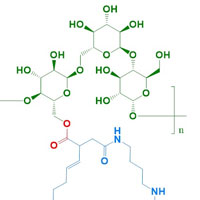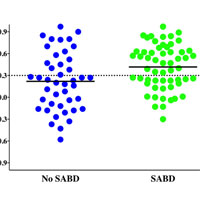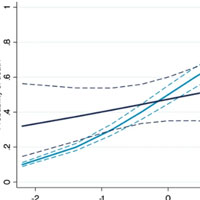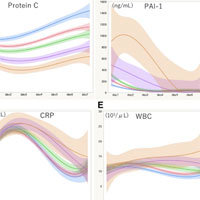Tag: sepsis

Serum Protein Changes in Pediatric Sepsis Patients Identified with an Aptamer-Based Multiplexed Proteomic Approach
The serum protein changes identified with the aptamer-based multiplexed proteomics approach used in this study can be useful to distinguish between sepsis and noninfectious systemic inflammation. A cohort of 40 children... read more

Endogenous Agmatine Metabolism Correlated with the Progression of Sepsis
Supplemental exogenous agmatine could ameliorate the lipopolysaccharide-induced systemic inflammatory responses and multiple organ injuries through the 2 receptor">imidazoline I2 receptor-ribosomal S6 kinase 2-nuclear factor-κB... read more

Impaired Cerebral Auto-regulation is Associated with Brain Dysfunction in Patients with Sepsis
Cerebral auto-regulation was altered in half of the patients with sepsis and was associated with the development of SABD. These findings support the concept that cerebral hypoxia could contribute to the development of... read more

Time to Treatment and Mortality during Mandated Emergency Care for Sepsis
More rapid completion of a 3-hour bundle of sepsis care and rapid administration of antibiotics, but not rapid completion of an initial bolus of intravenous fluids, were associated with lower risk-adjusted in-hospital mortality. Among... read more

Defining Benefit Threshold for ECMO in Children with Sepsis
This binational study demonstrates that a rapidly available sepsis mortality prediction model can define thresholds for survival benefit in children with septic shock considered for ECMO. Survival on ECMO was associated... read more

Effects of Sepsis on Mortality in Critically Ill Patients 2 Years After ICU Discharge
Compared with patients without sepsis, those with sepsis have higher mortality in the intensive care unit and have more pain, hospital readmissions, and functional decline within 2 years after discharge. During the study,... read more

Delayed Interhospital Transfer of Critically Ill Patients with Surgical Sepsis
Patients with surgical sepsis who spent more than 24 hours at an outside facility prior to transfer had greater initial illness severity, longer intervals between admission and source control, and more nosocomial infections... read more

Clinical Profile and Predictors of Outcome of Pediatric ARDS in a PICU
Pediatric acute respiratory distress syndrome (ARDS) contributes to a significant burden in the PICU of a developing country and is associated with significantly higher mortality. Infection remains the most common etiology.... read more

Correlation Among Endothelial Injury, Organ Dysfunction, and Several Biomarkers in Sepsis Patients
Protein C was superior for the prediction of organ dysfunction after 7 days of ICU treatment when compared with other biomarkers of endothelial function, inflammation, and coagulation. C-reactive protein (CRP) and white blood... read more

A 10-Year Longitudinal Analysis of Protocol-Based Sepsis Management
This 10-year single-center retrospective cohort showed that the use of PB management of severe sepsis and septic shock was associated with a decreased hospital mortality for patients. This mortality benefit was preserved... read more

Epidemiology of Pediatric Severe Sepsis in Main PICU Centers in Southwest China
This multicenter study demonstrates that pediatric severe sepsis is common and is a factor in the high mortality rate that is observed in PICUs in Southwest China. The mortality rate remains high; therefore, improved... read more

Abnormalities in the Host Immune Response During Hospitalization for Sepsis
In this cohort study of 483 patients who survived hospitalization with sepsis at 12 US hospitals, 25.8% had elevated high-sensitivity C-reactive protein levels (a marker of inflammation) at 3 months, 30.2% at 6 months, and... read more

Acute Kidney Injury in Hematopoietic Stem Cell Transplantation
This review provides an update on the risk factors, causes, and treatment approaches to HSCT-associated acute kidney injury (AKI). Patients who undergo HSCT have many risk factors for developing AKI, including sepsis,... read more

Risks and Benefits of Stress Ulcer Prophylaxis for Patients With Severe Sepsis
Since the rate of gastrointestinal bleeding requiring endoscopic hemostasis is not different comparing patients with and without stress ulcer prophylaxis, and the increase in hospital-acquired pneumonia is significant, routine... read more








